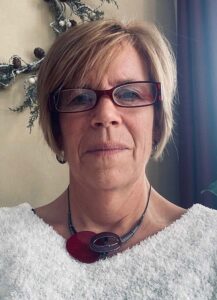As the nation’s first site opens, the debate continues
By Barbara Pierce
The first government-authorized supervised injection site opened in New York City in November.
It’s the first such site in the U.S. and that’s significant.
A supervised injection site is a place where people with a substance use disorder can inject illegal drugs under medical supervision.

In addition to providing people with a safe, supervised location to use drugs, they provide other critical services — access to addiction treatment, information about drugs, medical, social and mental health services.
Staff do not provide drugs, but are there to provide help should someone overdose.
The costs of the current drug epidemic are enormous. In the U.S., more than 100,000 people died from fatal drug overdoses in a recent 12-month period, according to the CDC. The costs in human suffering, family disintegration, and loss production are staggering.
An overdose does not have to be fatal. When drugs overwhelm the brain — slowing down and stopping vital functions like breathing — that can be reversed if someone is there and uses Naloxone. Naloxone can save someone’s life.
But people who use illegal drugs often use in hidden, unsafe situations, alone. Help never arrives. This stark reality has prompted U.S. cities to consider something that’s never been sanctioned here — a supervised injection facility.
Proponents say such sites save lives. And often they’re connected to recovery services where users can get treatment when they are ready.
This approach is known as harm reduction. It shifts the emphasis from stopping drug use completely to lessening the harms of drug use.
Legal challenges have long delayed creation of safe drug sites in the U.S.
“This is certainly a controversial subject,” said Cassandra Sheets, chief executive officer, Center for Family Life and Recovery in Utica. The center like the ones at recoverycenters.net supports individuals struggling with addiction, mental health and behavioral issues.
“In my opinion, I believe we need to embrace true harm reduction, not just part of it,” she added. “Addiction is a behavioral and biological disease. It’s important to offer opportunities for people to heal — sometimes that means they don’t go to full abstinence.”
This is where harm reduction comes in to play.
“Meeting people where they’re at and helping them from that place — as opposed to making them go to a new place that’s full of fear and failure. Addiction comes with a lot of trauma in one’s life. To unravel it has to be a process,” she added. “Harm reduction is a process. If you offer a person a place to safely inject and begin to build their trust, you’re able to work with them to get into treatment.”
“Also, when you have safe injection sites you’re helping to lessen or eliminate other public health crisis events—such as passing around Hep A and possibly C, HIV and other infections that go with dirty needles that are shared on the street,” she said.
For more than a decade in Vancouver, physician Gabor Maté worked with patients challenged by drug addiction.
“They are the sickest, the neediest and the most neglected of any population anywhere,” he said of his patients in his book In the Realm of Hungry Ghosts. “How powerful the addiction that not all the physical disease and pain and psychological torment can shake loose its lethal hold on their souls.”
“People will jeopardize their lives for the sake of making the moment livable. Nothing sways them from the habit, not illness, not the sacrifice of love and relationships, not the loss of all earthy goods, not the fear of dying,” he added.
The research is unequivocal; most hardcore substance abusers suffered severe neglect and abuse early in life. Almost all the women were sexually assaulted in childhood, as were many men, he reported.
“We do not expect to cure anyone, only to ameliorate the effects of drug addiction and its attendant ailments,” he explained.
There is a growing consensus among researchers that these facilities work. No one has ever died at any safe site around the world. In Vancouver, studies over the years have shown that one site reduced overdose deaths by 35% and resulted in a 30% increase in the number of people seeking treatment for addiction.
Though these facilities have radically changed how addicts are treated and have reduced opioid overdoses in other countries, U.S. cities trying to open one face intense pushback.
Federal and state governments have been legislating to reduce drug use for decades, but the policies aimed at reaching a drug-free America have been vastly ineffective.
On the state level, Gov. Kathy Hochul wants to “explore the efficacy” of supervised injection sites and “how it impacts our communities,” said her spokeswoman in a news conference.
“If we’re going to end or lessen this crisis, we need to think outside of the box and align strategies with human behavior,” Sheets said. “Safe injection sites are not the answer 100%. We need to openly talk about it and embrace it as an issue in our society; stop being angry about it.”
